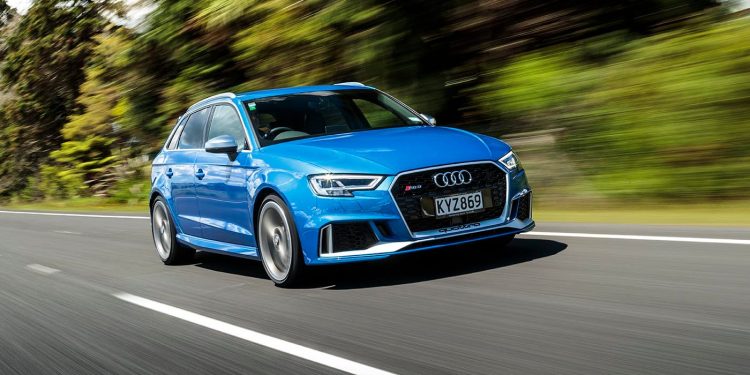2018 Audi RS 3 review
Words Peter Louisson | Photos Tom Gasnier
Audi has rejigged its RS 3 Sportback hatch, with an even stronger engine and improved weight balance so it’s faster everywhere. Is it the mega-hatch to beat?
Six months ago we got to preview the latest new entrant in the hot hatch wars, though it was actually a hot sedan, the RS 3; the hatch, or Sportback in Audi speak was promised and has duly arrived. The smallest RS model had ascended to the top step of the power podium, outmuscling the 280kW Mercedes-AMG 45 with almost 400 horses (294kW). And it went like stink. The sedan is rated to do 4.1sec 0-100km/h.
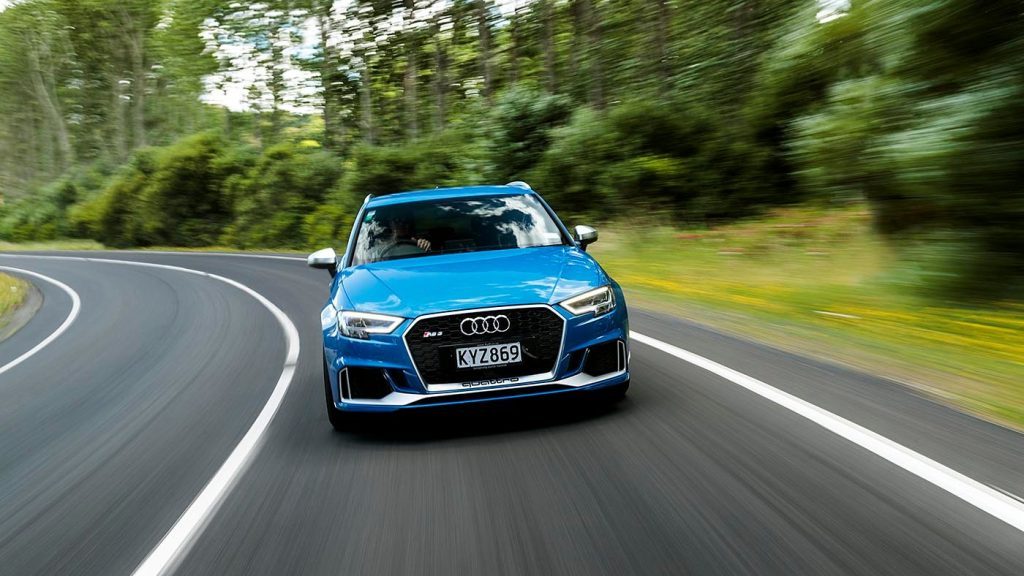
We massaged a GPS-timed 3.97sec out of it on a cool day out by Glendhu, and the new hatch is meant to be just as quick. It matched the sedan, though on a much hotter day with molten tarmac. Stick the ESP in its middle dynamic mode, dial up Sport via the Drive Select and it launches beautifully from 3500rpm. On the right side of the Audi Virtual Cockpit instrumentation, the power and torque dials both register 100 per cent momentarily. And after 3.9sec, the RS 3 has just gone illegal.
Back in 2015 the new RS addition was good for 270kW and 465Nm and now it manages 294kW, as mentioned, and 480Nm. We achieved 0-100 and 80-120 performance figures of 4.11sec and 2.61sec, respectively back then, so the incremental upgrade has subtracted a small amount, roughly 0.2sec for the former and 0.15sec for the latter, which is small beans in one sense, big news in another.
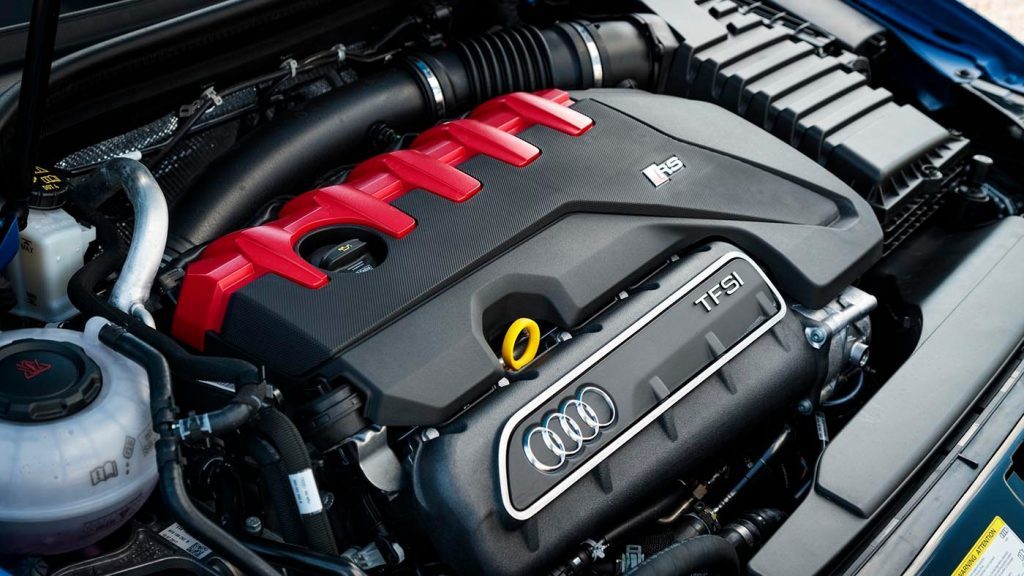
For it’s the first hatch we’ve driven that gets to 100 in the threes. The AMG 45 and M2 are roundly put in their place, both unable to better four seconds in the sprint to motorway speeds (4.18 and 4.25). And while it’s close for the overtaking time, the Audi still gets the wood on the others, with a low 2.5sec run.
To drive, this is every bit as compelling as before, actually more so. And we liked the last iteration, which was voted our Performance COTY for 2015. The engine noise is stirring, the grunt accessible from almost any revs. It’s fast without trying, hugely so above 4500rpm and is a greyhound even just sticking to midrange revs. A lab rated fuel use figure of 8.4 compares with our best in the low nines, but this can easily double as well.
Thanks to the extra mumbo of the new 2.5 five-potter, and the AWD drivetrain that can now shift more of the drive rearward – with provocation it will drift apparently! – it shades the 2.0L four-cylinder turbo competition. And the set-up makes both RS 3 variants all but as quick as the RS 5, yet they cost roughly $50k less. Not that either looks quite as alluring; the original RS 5 was a beauty and the latest model is even more of a catch.
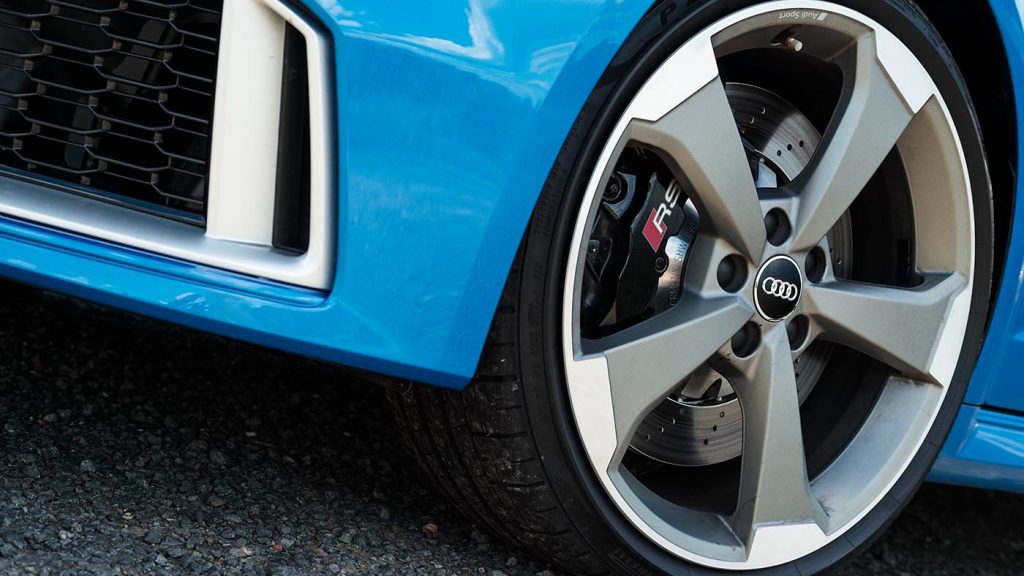
By comparison, the RS 3 Sportback featured here is borderline anonymous; the flared guards are subtle, there’s a bit more aggression in the single frame grille, but overall you’d not necessarily pick this as the sportiest of all A3 Sportbacks until you looked a bit closer at the big alloys and brawny brakes with their painted calipers. Think of it as a stealthy bolter then.
Contributing to the sheer speed is a new five-pot engine, now made of alloy for added lightness, a celebration of sorts for Audi which has been making the odd-cylindered mill for four decades. It debuted in 1976 in the Audi 100 and after a hiatus, the five-cylinder in-line five reappeared in 2009 powering the TT RS.
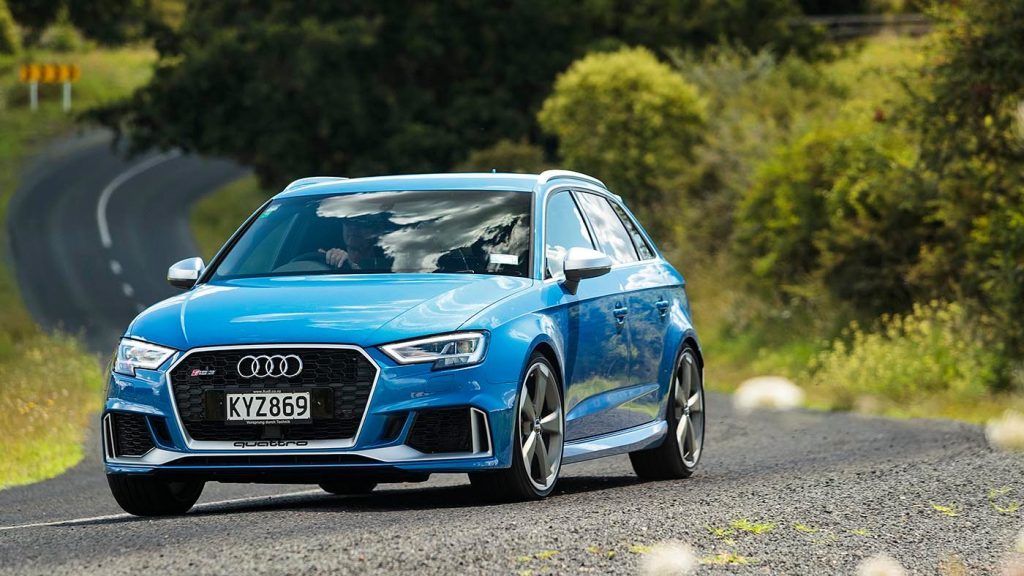
It got a solid power bump (250kW, 450Nm) thanks to the implementation of direct fuel injection. Since 2010 the five-pot has won the International Engine of the Year class award, 2.0-2.5L, and in 2017 it utterly blitzed the second place getter, the 2.5L flat four turbo engine shared by S variants of 718 Boxster and Cayman.
Drive the RS 3 sedan or hatch and you’ll soon see why; they do so much right. Brush the start button over by the passenger’s right knee and the engine fires with a sharp blast from its sports exhaust, the promise of things to come. You’re surrounded by much more glitz inside than out, the quilted leather sports seats body hugging.
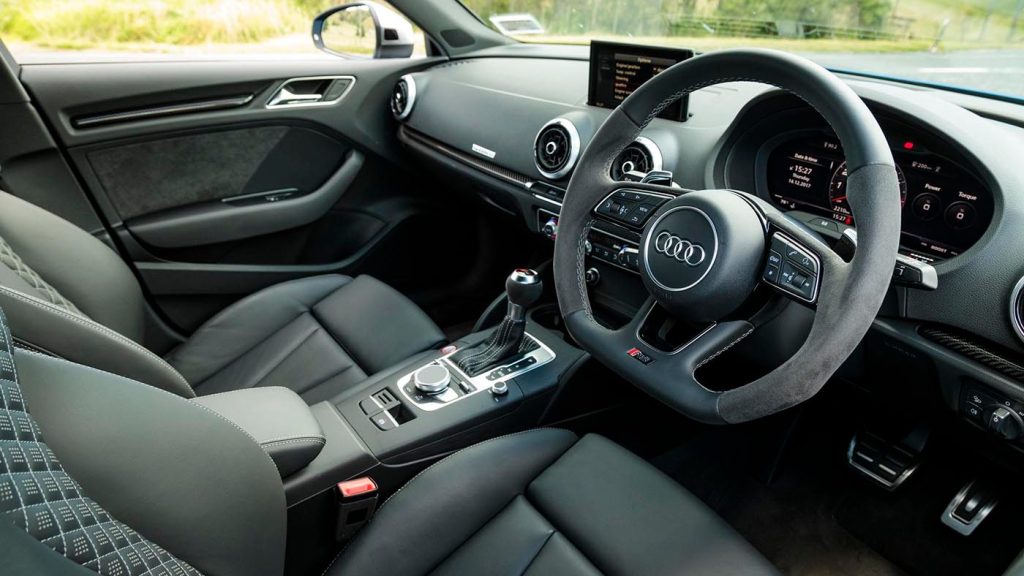
The RS 3 returns with the option of front tyres that are wider than the rears, helping to overcome the inherent weight imbalance that results from a transverse five slugger sitting ahead of the front axle line. Like most Audi quattro machinery, there’s roughly 59 per cent of weight riding atop the leading axle. However, by comparison with the RS 5 we drove recently and which weighed in at 1777kg, the RS 3 is almost 200kg lighter at 1590kg, and that’s telling in the turns. Contributing is an engine that’s significantly lighter by a claimed 26kg.
In 2015 the RS 3 scaled up at 1595kg. The latest version is only 5kg lighter thanks to increased specification levels, but its weight split has improved from 60/40 to 58.8/41.2, and while not that much else has changed mechanically, this new version seemed a bit keener to change direction, and didn’t feel like it pushed as much into understeer when you summon up the courage to give it a really good nudge. Moreover, it responds well to backing off the gas, rounding up into the turn with more vigour than the RS 5.
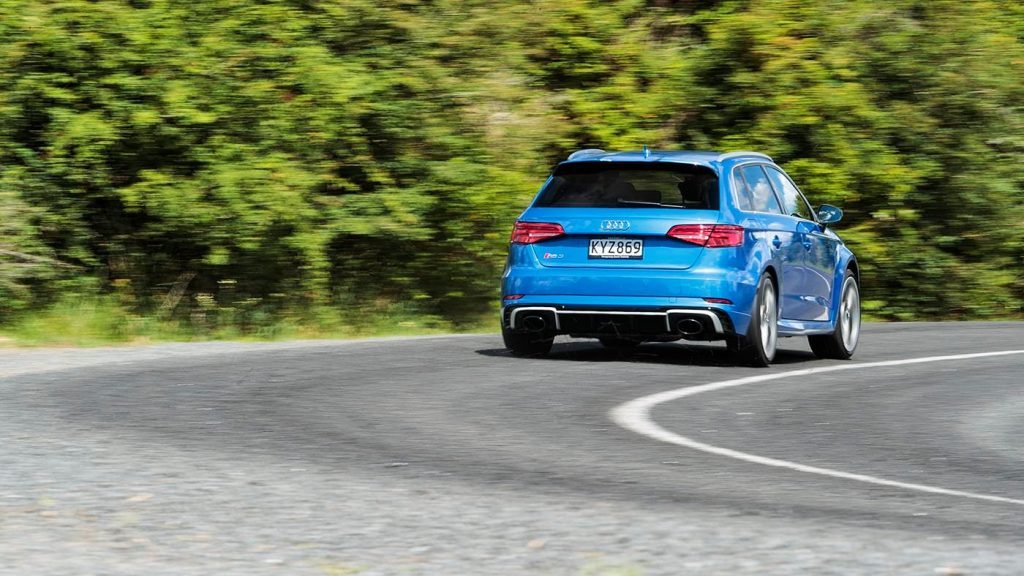
Not that you’re ever going to get it to tighten the line by adding gas, unlike the M2s of this world. Being more compact than the RS 5 it’s also a bit easier to place on road. And being a five-door, your occasional rear seat passengers aren’t asked to pretzel themselves into position. There’s actually quite reasonable room back there for two adults, certainly more breathing room than in the RS 5. And the practicality of the hatch is quite something; remove the cargo cover, fold the rear seats over and you’ve a highly practical almost flat load space (335-1175L) into which you can slot all manner of goods.
The RS 3 is appropriately specified, with not too much left to the options list. So you have to move the seats manually but there’s power adjustment for lumbar support and they’re sports offerings finished in Nappa leather with diamond stitching, and heating elements. They could plumb the depths better but visibility benefits.
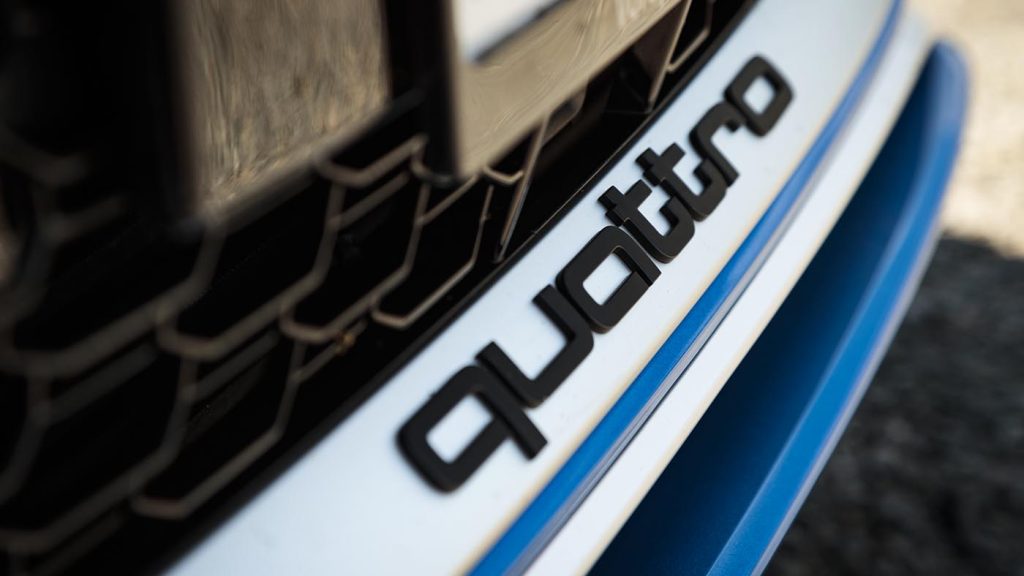
Other standard fittings include a sports exhaust, LED headlights, privacy glass, sonar front and rear, sports suspension with magnetic ride control (adaptive dampers), comfort entry and pushbutton start, along with idle stop, and all the safety items you’d expect, including autonomous braking and active cruise. Big beefy brakes are reassuring too, six-piston items up front.
Small things aren’t overlooked, like Audi Sport puddle lamps, high beam assist, and the like. Options include styling and interior design packages, and added safety features like lane and traffic jam assist. The most expensive options are a panoramic glass roof ($3000) and matrix LED lights at $2300.
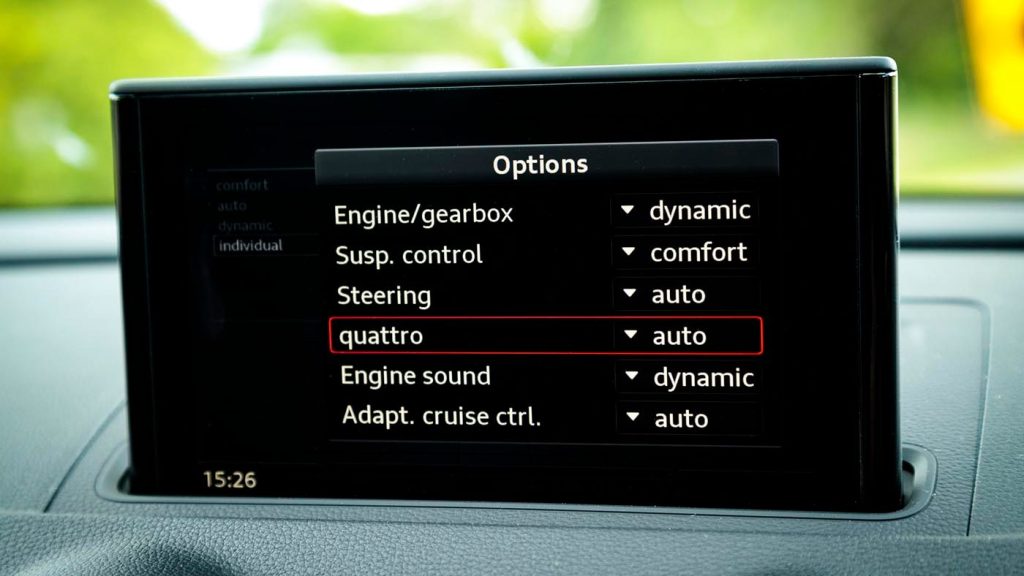
Where we described the previous RS 3 Sportback as the most performance you can buy for under six figures, this is now just over at $104,900 while the sedan variant costs $2k more. However, that includes a warranty incorporating three years of cost-free motoring.
For the improvements over its predecessor, it’s worth it. Buy the better looking but more expensive M2 if you’re a rear-drive IL6 purist. However, as a practical all-round hot hatch that’s also quicker than the competition this is a mighty compelling package.
| Model | Audi RS 3 Sportback | Price | $104,900 |
| Engine | 2480cc, IL5 / T , 294kW/480Nm | Drivetrain | 7-speed twin-clutch, AWD |
| Fuel Use | 8.3L/100km | C02 Output | 189g/km |
| 0-100km/h | 3.90sec | Weight | 1590kg |


